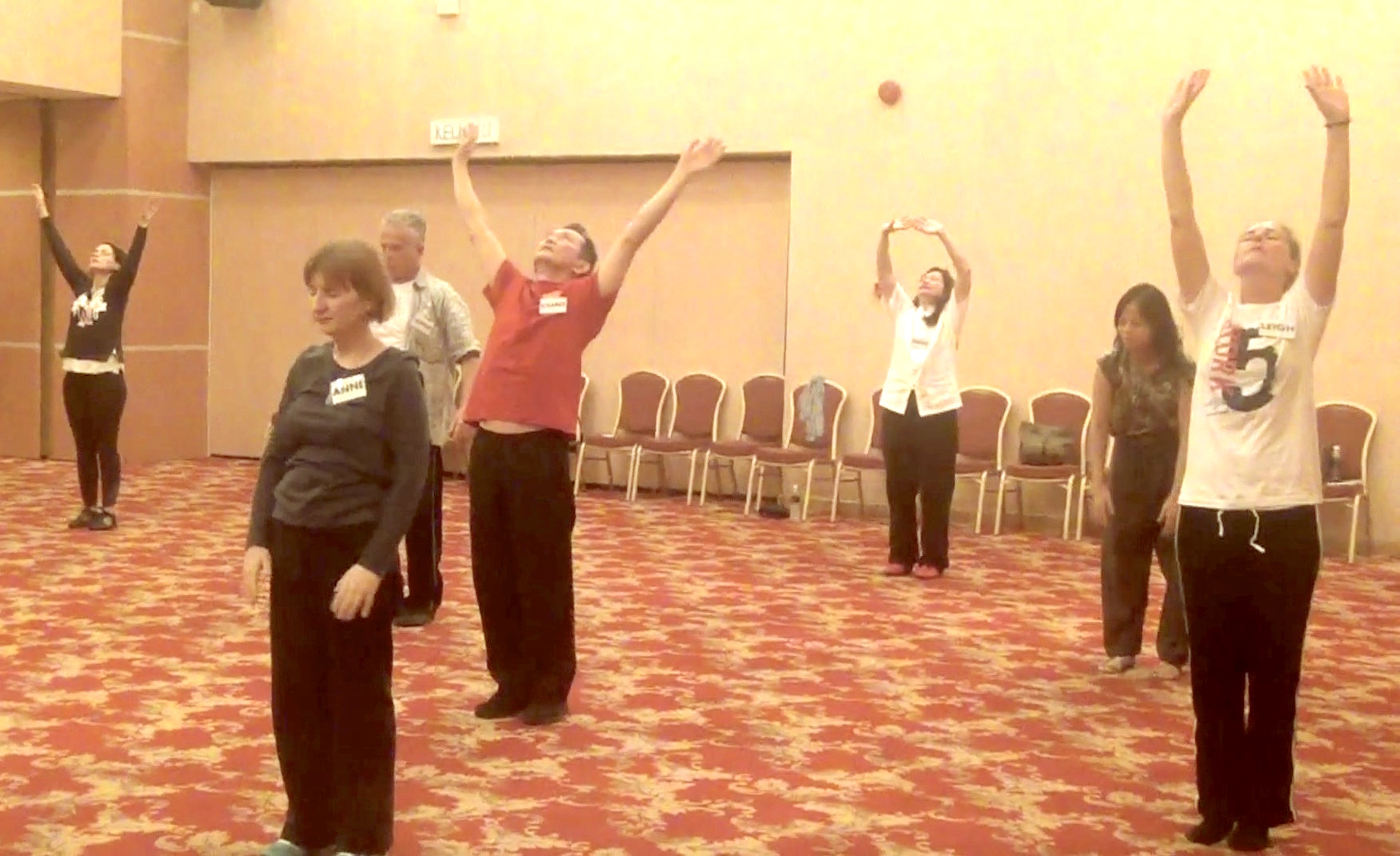OVER-TRAINING IN THE PRACTICE

Intensive Chi Kung Course in Penang
Question
What are the symptoms of over-training?
— Achim, Switzerland
Answer
Being tired, pain and feeling nauseous are the three very common symptoms of over-training.
A practitioner will feel energized when he has practiced chi kung. But if he feels tired instead, it is a symptom of over-training. He feels tired because he has generated too much energy that his physical body cannot bear it. This tiredness is different from having not enough energy. It is Nature's way of telling him to rest.
He should feel fresh after practicing chi kung, but if he feels painful, it shows over-training. The energy he has gathered from his training is too much that it pushes too hard on his thick blockage making him feel painful. If he has practiced less or less intensely, the energy gathered is less and the push is gentle.
He should feel pleasant after chi kung practice, but if he feels nauseous, it shows that too much negative emotion is being pushed out. If he has practiced less or less intensely, the pushing out of negative emotion is gentle and he feels pleasant.
If a person has practiced wrongly, he may also feel tired, painful and nauseous, but the feelings are different. This is due to the limitation of words. Words do not exactly describe what we want to say when there are shades of difference. A good example is the sour taste of an orange. The sour taste can be due to the fact that the orange is good, and it can also be due to the fact that the orange is bad.
Tiredness, pain and nauseousness due to wrong practice are sharp and severe, whereas those due to over-training are less severe and sometimes even pleasant. Tiredness, pain and nauseousness due to wrong training come immediately, whereas those due to over-training come after pleasant feelings.
Question
What should we do if we have over-trained?
Answer
In other schools where students practice for about an hour per session, a good way to overcome over-training is to practice less, like half an hour instead of an hour, or alternate day instead of every day.
Reducing the time of training is not feasible in our school because our practice session for chi kung is short, just about 10 minutes. More significantly, our students enjoy their practice. For those who practice kungfu, the earlier recommendation was an hour. They can reduce their practice time to half an hour.
An excellent way for us in Shaolin Wahnam is to reduce the intensity by not entering too deeply into a chi kung state of mind, or not entering too deeply into Zen or Tao. If you take as 100% the depth you enter into a chi kung state of mind, or enter Zen or Tao, in my courses, half that in your daily practice to 50%. Then half the 50% to 25%.
Practicing at 25%, and not at your potential of 100%, is an excellent way to reduce the intensity of practice, which will overcome or prevent over-training. If you find 25% is still too powerful for your daily practice, you can reduce the intensity to 20% or less.
If you practice at 60% or 70%, you may over-train, and have adverse effects instead of benefits. By practicing at 25% or at an level suitable for you, you get the best results. If you find that you still have over-trained when you practice at a lower level of performance, you may adopt negative action. A good method is to purposely intellectualize. When you intellectualize, your result will be less, but it is the best for you.
Another method is to purposely tense your muscles. Again, your result will be less, but it is good for you if you have over-trained. Have a gentle chi flow at the end of the session to clear the harm caused by your purposely tensing your muscles.
The above is taken from Questions 7 and 8 December 2018 Part 2 of the Selection of Questions and Answers.
LINKS
Courses and Classes
